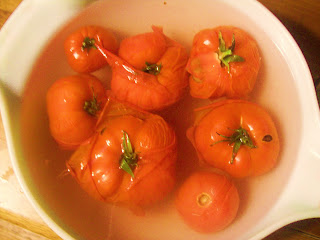We purchase all our household meat when it is on super sale at the grocery store. A few years ago I tracked when various items went on sale throughout the year. Both chicken and beef are at sale prices the same three times a year. Beef just happened recently so on sale and we spent 50 dollars to stock up on quite a few months worth. This year, we went early enough to be able to purchase round steak as well. The hedonistic luxury of steak is going to be quite gluttonous in the months to come.
By portioning the meat, our round steak worked out to cost 74 cents a meal. I encourage people to not coupon clip, but to watch when certain items are marked down incredibly low and then stock up.
By canning the hamburger we purchased, there is no need for freezing and we can have it for years to come. The pre-cooked status of the meat makes it ideal for dehydration (for backpacking) as well as summer dishes where all that is needed for the oven is to reheat quickly.
Canning Hamburger
Though raw packing can be done, it honestly makes me nervous. So we precook our meat slightly. Basically you want their to still be enough pink to cause you a pause about eating it. The meat should be cooked enough that if you were really, really hungry you would consider eating it. The pressure canning completes the cooking process. If the meat goes into the canner completely cooked, what comes out is really tough and often cooked down into really small little bits.
When you cook the meat, put it into an ungreased skillet and then fill the skillet with water enough to cover. This will boil the fat out of the meat as well as give you liquid to pour into the jars.
Use a slotted spoon to drain as much liquid away from the meat as possible and then stuff it into the jars. Since hamburger cooks up in irregular shapes which are slightly "fluffy," it is important that you really stuff and manhandle the meat in the jar so that it really packs down.


Using a 1/3 of a cup measure, pour enough liquid into the jars to cover most all of the meat, but still leave 1 inch of head space.
Due to meat being greasy, the rim of the jar will need to be wiped down with white vinegar before the lids and rings are placed on. If any grease or meat residue is left on the ring, the jar will not adequately seal. We can meat which is 20 percent fat or less. By boiling (instead of frying) the meat, most of the fat is removed. When the meat cools and the jars have been at room temperature for a couple months, the fat will layer at the top further helping to seal in the meat.












































